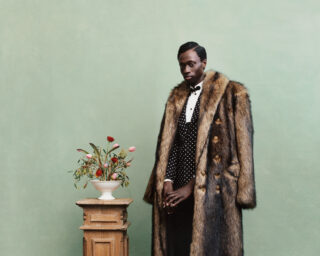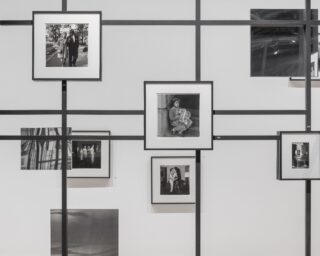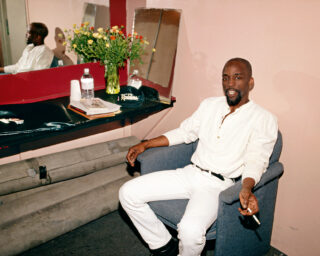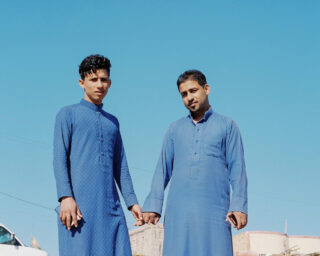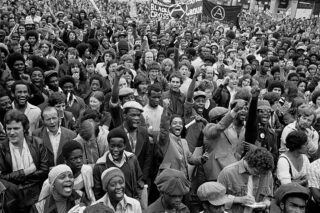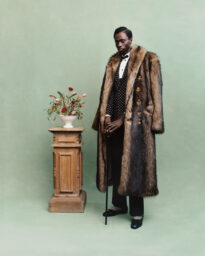Rowan Renee's Defiant Pictures of Trauma
Rowan Renee is a Brooklyn-based artist whose work deals with gender, transgression, and male violence. Their 2016 series Bodies of Wood is presented at Aperture as the centerpiece of a weekend-long collaboration with the Ackerman Institute for the Family and The Voices and Faces Project and explores the role of art-making and storytelling as vehicles to address gender-based violence. Chris Boot, executive director of Aperture Foundation, recently spoke with Renee about the project.
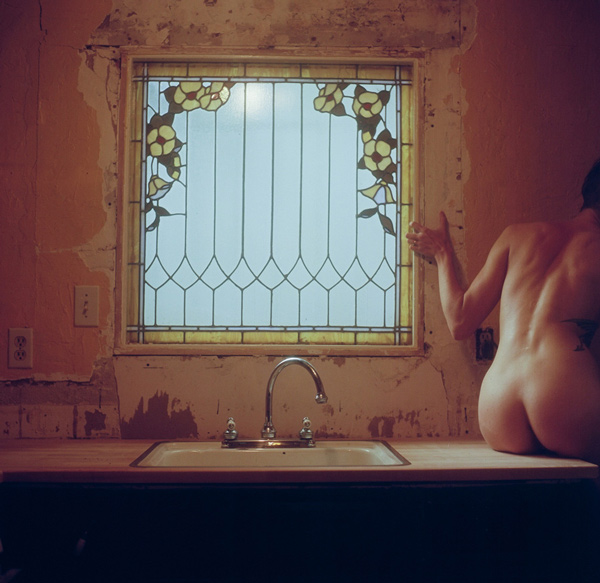
Rowan Renee, The room through eyes that see askew, 2016
© and courtesy the artist
Chris Boot: Can you tell us the story behind your project Bodies of Wood?
Rowan Renee: Bodies of Wood is a collection of images made from a place deep within that needs to speak. The drive to make it was urgent, both a longing to access something that was very essential to understanding who I am, but also that this was something that needed to be talked about publicly in order to heal. The taboo of incest in our society is not so much about the violent act itself; it is common and the perpetrators are rarely convicted. The taboo is talking about it. And I think that is because to talk about it, we have to look honestly at a myriad of broken institutions, of false narratives, of interlocking systems of injustice that work together to oppress people.
Boot: Do you see this as a political gesture?
Renee: Yes, in the sense that I believe that bringing light to this issue can bring strength and insight to others who have experienced similar things to talk about their story, and also to understand that being a survivor is a complex identity. In this series, Bodies of Wood, I want to challenge the idea of victimhood and the way that label is often used to make victims seem fragile or to strip them of agency on their path to healing. I want to complicate the narrative a bit, to discuss frankly the pain of abuse and the injustice of the system that is complicit to it, but also the way the energy from deeply painful experiences can be harnessed in so many powerful ways. In that way, I think of Bodies of Wood as a project about transformation.

Rowan Renee, Bodies of wood, 2016
© and courtesy the artist
Boot: How has making Bodies of Wood proved transformative for you?
Renee: Bodies of Wood was my third or fourth attempt to address this story. I kept being drawn back to the same moment in my past to make work, and even when I am not dealing with my experiences of abuse directly, I’ve realized that my work is always driven by narratives of power and an attempt to transgress figures or systems of authority. In the process of making this work, I’ve had to sit with my anger as a driving force of my creative process. It’s an emotion that we find uncomfortable, or even dangerous, but I want to suggest that there’s a constructive side to it. It’s been a source of momentum and a place to find strength to break with the status quo. I also think that I have to manage my expectations about how this work, or art in general, creates social change. Through Bodies of Wood, I’ve been learning patience and understanding that the transformations that art usually engenders are slow and within the intimate experiences of individual viewers or readers. Shifting the needle is an incremental process, and the shifts may not be visible for a long time.
Boot: Where did you make the series?
Renee: I made the whole collection of images in about four weeks from December 2015 to January 2016. I was at a residency on a house boat in Sausalito, California. At the same time, I also finished the personal essay that accompanies the images. That’s to say, the process of making it was incredibly fast. In total I took about 180 frames of medium format film and the final edit is eighteen images. Because I was working by myself with an analog film camera, I didn’t have a way to actually see myself in these images until I got the developed rolls back a week later. I think that detail is important, because I feel like each of these images was a leap of faith. I literally couldn’t see what I was doing.
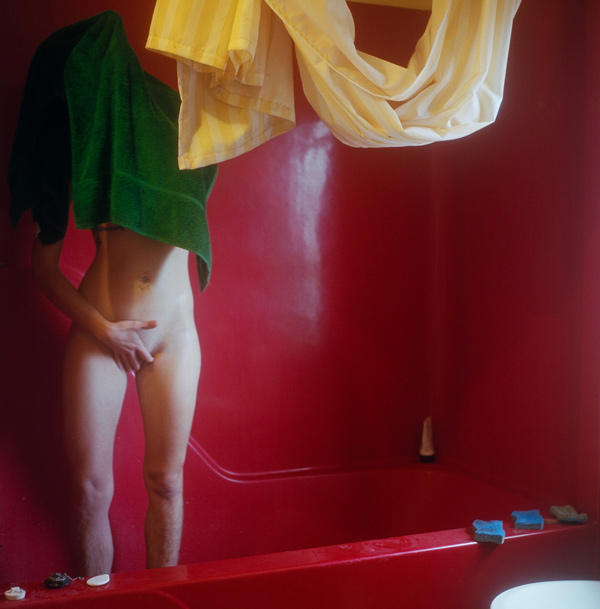
Rowan Renee, The ritual of scrubbing it all out, 2016
© and courtesy the artist
Boot: Now that you are going to present the work publicly, how have you reflected on the experience of your residency?
Renee: Looking back on that time, I start to understand what it means to experience artistic inspiration. I think something happened within me where I was able to become uninhibited and tap into some kind of fundamental life force. This is what I mean when I say I want to complicate the narrative of victimhood. While I was working on Bodies of Wood, I felt a profound joy. The feeling was connected to the feeling of freedom. I was no longer bound to these pressures that wanted me to keep quiet about these experiences. One of those forces is my father, who passed away six years ago. But it also was connected to the feeling of my craft. That I had developed a fluency at making images, and that I could wield it with power and confidence. I think you can see that complexity in my images.
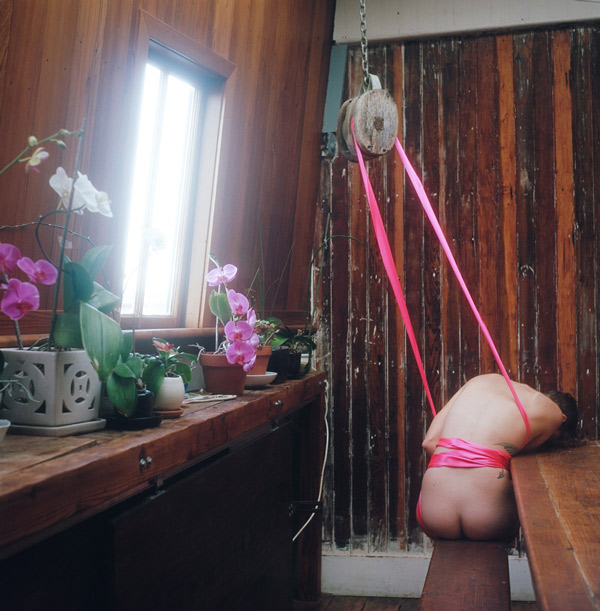
Rowan Renee, The brightness where I am bound, 2016
© and courtesy the artist
Boot: Could you tell us about how your working process influenced the concept and tone of the images?
Renee: I’ve done a lot of work in the tintype process, which is monochrome. So, working with color was a new thing when I started Bodies of Wood. And, apparently, the way I use color in this body of work is very distinct. Almost every frame has these strange collisions of complimentary colors, often fragmenting the body. There’s also these compositional repetitions. My body is often faceless, flipping back and forth from facing toward the camera and away from it. And then there’s the self-consciousness of the process and the viewer. I worked with a remote release, which is intentionally shown in some of the images. There’s one with fake blood, which is probably one of the most graphic of the images, but the whole apparatus of creating that scene—the dark slide, the remote release, the food coloring and mixing bowls—is shown. For me, this touches on a very important question when doing work around trauma: How do you represent violence without perpetuating it?
Chris Boot is executive director at Aperture Foundation.
Bodies of Wood is on view at Aperture May 20 – May 23, 2017. The weekend events also include:
The Voices and Faces Project’s “Stories We Tell” Testimonial Writing Workshop
Saturday, May 20, 10:00 a.m. – 5:00 p.m. and Sunday, May 21, 11:00 a.m. – 5:00 p.m.
Bodies of Wood Exhibition Reception and Panel Discussion
Tuesday, May 23, Aperture Gallery and Bookstore
6:00–7:00 p.m. – Cocktail Reception for Rowan Renee
7:00 p.m. – Panel Discussion with Lois Braverman, Rowan Renee, and Mila Zuo











